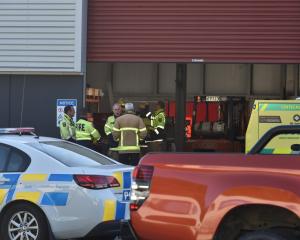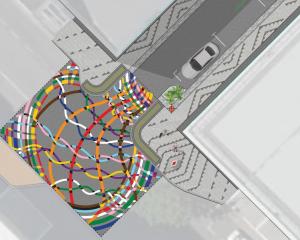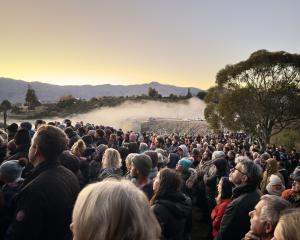The 13 photographs will feature in an exhibition looking at what it means to care for dying family members.
The chosen exhibits, with brief accompanying stories, are from more than 900 taken by 10 carers looking after family members at home.
Dr Angelo, who is an occupational therapist, began work at the hospice two years ago after moving from Pennsylvania.
She "knew nothing" about hospice work and needed to learn quickly what the issues for carers were so their needs could be met by the hospice's new Kowhai education programme.
She also interviewed the 10 carers, gathering more than 60 hours of material, and held discussions with three focus groups.
Dr Angelo managed to reduce the number of photographs down to her favourite 30, and then called on hospice staff to choose their top 10 to help with the final selection.
While no cats feature in the chosen exhibits, they were something which featured frequently in the carers' photos, along with shots of gardens.
Only one of the 10 carers, who had a breathing difficulty, did not have a cat, she said.
Gardens were also "extremely important".
Some people were particular about keeping their gardens tidy, while for others it might be something as simple as having a well-ordered linen closet.
It was as if they wanted to have control over something in their lives when much of it felt out of control.
Feeling housebound, or that their world was smaller, was a common sentiment.
The photograph advertising the exhibition is of water swirling down a plughole, expressing the carer's feeling that they cannot keep their footing and are being swept away.
One of the photographs features a plethora of pills with an accompanying statement, "I can do medications if he doesn't talk to me".
While carers did take photographs of their family members, Dr Angelo deliberately chose not to feature them for privacy reasons. The stories which go with the photographs also do not identify the people involved.
The most important thing promoted in the Kowhai programme was that carers must take care of themselves or there would be two sick people to deal with.
Asked if carers were always receptive to that idea, Dr Angelo laughed.
"Not always. It's a journey. Sometimes, the person can't cope any more and the person who is ill realises they need some more help."
While her study did not address the issue of people in the community lending a hand to those with a dying family member, Dr Angelo said if people wanted to offer help it was best to do it in a specific way.
Suggesting someone call if they needed anything was too vague. Instead they should state what and when they were going to do something specific.
"If you have a skill, provide it to the family."
Dr Angelo hoped the exhibition, which opens at the Otago Art Society, Dunedin Railway Station, on Friday and runs until October 27, will give people a greater understanding of what it means to be a carer.
Information gleaned from the carers has been used to help plan the Kowhai programme, which has been held three times.
It has had 72 visits (not all people attend all of the sessions) to its 11 sessions which include what to expect in the last 48 hours of life, medication management, communication, funeral planning, managing emotions, nutrition and spirituality.
Dr Angelo is also preparing a paper from the information gathered for publication in a palliative care journal.











